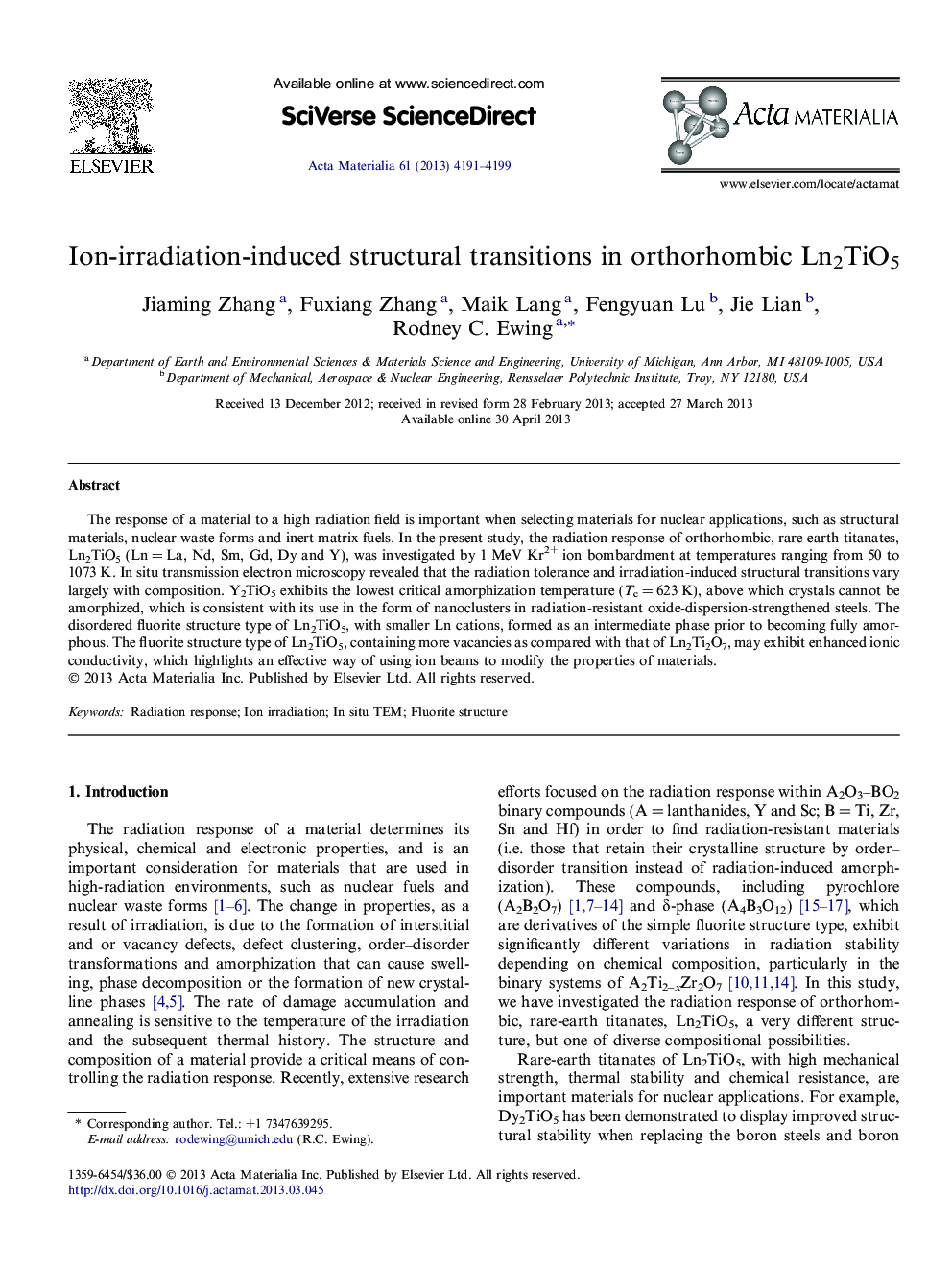| Article ID | Journal | Published Year | Pages | File Type |
|---|---|---|---|---|
| 10620164 | Acta Materialia | 2013 | 9 Pages |
Abstract
The response of a material to a high radiation field is important when selecting materials for nuclear applications, such as structural materials, nuclear waste forms and inert matrix fuels. In the present study, the radiation response of orthorhombic, rare-earth titanates, Ln2TiO5 (Ln = La, Nd, Sm, Gd, Dy and Y), was investigated by 1 MeV Kr2+ ion bombardment at temperatures ranging from 50 to 1073 K. In situ transmission electron microscopy revealed that the radiation tolerance and irradiation-induced structural transitions vary largely with composition. Y2TiO5 exhibits the lowest critical amorphization temperature (Tc = 623 K), above which crystals cannot be amorphized, which is consistent with its use in the form of nanoclusters in radiation-resistant oxide-dispersion-strengthened steels. The disordered fluorite structure type of Ln2TiO5, with smaller Ln cations, formed as an intermediate phase prior to becoming fully amorphous. The fluorite structure type of Ln2TiO5, containing more vacancies as compared with that of Ln2Ti2O7, may exhibit enhanced ionic conductivity, which highlights an effective way of using ion beams to modify the properties of materials.
Related Topics
Physical Sciences and Engineering
Materials Science
Ceramics and Composites
Authors
Jiaming Zhang, Fuxiang Zhang, Maik Lang, Fengyuan Lu, Jie Lian, Rodney C. Ewing,
